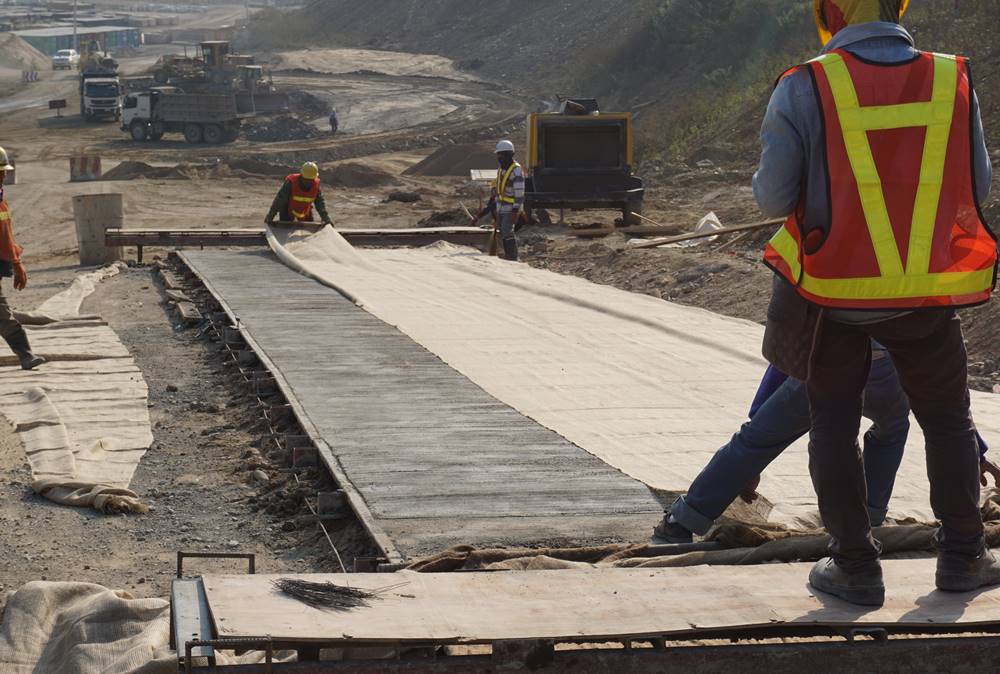
There are many concrete repair techniques to choose from, but which one is the best for your situation? Here are five concrete repair techniques to help you choose the right one for your needs.
Why Concrete Repair Is Important
Concrete is a versatile, durable and strong material that is widely used in the construction industry. Despite its many benefits, however, concrete structures can still develop cracks and other forms of damage over time due to wear and tear, exposure to harsh weather conditions or other factors. This makes concrete repair an important part of maintaining the integrity and safety of these structures.
- One key reason why a concrete repair is so important is that damaged concrete can compromise the strength and stability of a structure. Cracks or holes in a concrete surface can allow water to seep through, which can weaken its structural integrity over time. In addition, small issues with a building’s foundation can quickly escalate into major problems if not addressed promptly.
- Another reason why repairing damaged concrete is crucial has to do with aesthetics. Cracked or pitted surfaces on sidewalks or parking lots can create tripping hazards for pedestrians while also detracting from the overall appearance of a property. By repairing these blemishes in the concrete as soon as they are identified, property owners can help avoid costly repairs down the line while also keeping their properties looking their best.
Concrete Repair Techniques
Patching
Patching is one of the most common concrete repair techniques. It involves filling the cracks and holes in the concrete with a cementitious material to restore its strength and appearance. Patching can be used for both structural and cosmetic repairs, depending on the extent of the damage. It’s important to ensure that the patching material has good adhesion to the existing concrete surface to prevent future damage.
Resurfacing:
Resurfacing is the process of applying a new layer of concrete or specialized coating over an existing concrete surface. This method is often used to repair and restore deteriorating or damaged concrete surfaces without the need for complete replacement. Resurfacing can also provide an opportunity to update the appearance of an outdated concrete surface with various design options, colors, and textures.
The process involves preparing the existing surface by cleaning it thoroughly and repairing any cracks or holes. Then, a bonding agent is applied to ensure proper adhesion between the old and new layers. Finally, the new layer of concrete or coating is applied in accordance with the manufacturer’s instructions.
The Dry-Pack Method:
The Dry-Pack Method is a type of concrete repair technique that involves using a mixture of Portland cement and sand to restore cracks or holes in various surfaces. This method is known for its durability and strength, as well as its ability to resist water infiltration. Additionally, it’s an affordable option for repairing minor damages.
Replacement Of Unformed Concrete:
Unformed concrete refers to concrete that has not yet been shaped or formed into its final shape. When replacing unformed concrete, it is often best to use a mix of fresh concrete and a bonding agent that will ensure proper adhesion between the new and old surfaces. The key is to make sure the new concrete is level and properly cured before being subjected to any stresses or loads. This technique can be particularly effective for repairing or replacing large areas of damaged or deteriorated concrete surfaces.
Preplaced Aggregate Concrete:
Preplaced Aggregate Concrete (PAC) is a technique in concrete repair where the coarse aggregate is preplaced in the damaged area and then grouted with a cementitious material to produce a new concrete surface. This method is commonly used in repairing bridge decks and roads because it allows for faster repairs and reduces traffic disruption. PAC can also improve durability and reduce shrinkage compared to traditional repair techniques.
Choosing The Right Repair Technique
Choosing the right repair technique for concrete depends on several factors such as the extent of damage, location, and intended use. For minor surface damage, resurfacing or patching can be used, while for more significant issues, replacement or reinforcement may be needed. The Dry-Pack Method is suitable for repairing small to medium-sized areas with a depth of up to 2 inches. On the other hand, preplaced aggregate concrete is ideal for large repair jobs where heavy structural loads are involved. Ultimately, choosing the right repair technique should be based on a thorough assessment by a qualified professional like Slabjack Geotechnical.
Conclusion
In conclusion, concrete repair is an important aspect of maintaining the structural integrity of buildings and infrastructure. By using the right repair technique, such as resurfacing, dry-pack method, or preplaced aggregate concrete, you can extend the lifespan of concrete structures and prevent further damage. When considering concrete repair options, it’s important to evaluate the extent of damage, location, and intended use in order to choose the most appropriate technique. With proper maintenance and repairs, we can ensure that our built environment remains safe, functional and aesthetically pleasing for many years to come.
